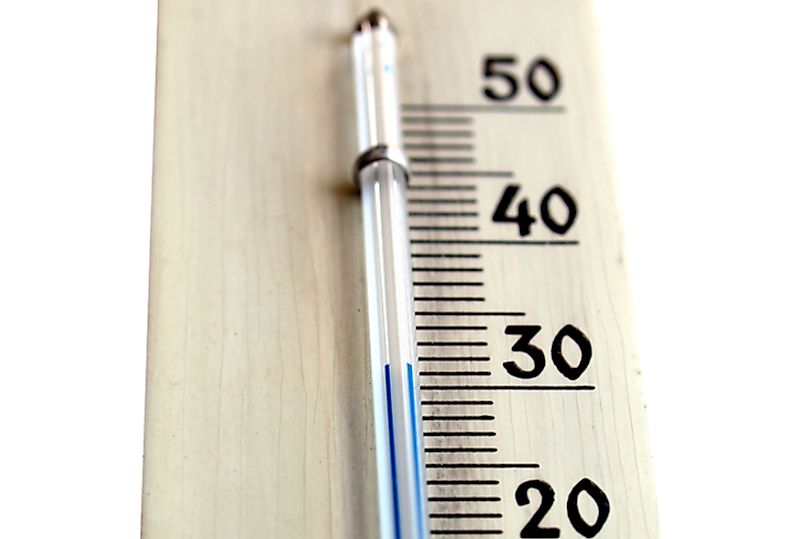
What is Temperature?
Temperature is the intensity of hotness or coldness of an object. Thermodynamic temperature can be defined as a measure of kinetic energy of molecules (or atoms) of the object. In general, the faster the molecules move in an object, the higher the kinetic energy and temperature will be.
Another approach to define temperature is to consider two objects made up of different metals (heat conductors). When these objects are kept in contact for a long enough time, they will reach a state of “Thermal Equilibrium”. Equilibrium denotes that the objects no longer transfer any net (heat) energy to each other. We would then say that the given two objects are at the same temperature. This is the property which can be used to measure temperature. When we keep a thermometer in contact with the object (whose temperature is to be found out), the temperature of the object can be determined when equilibrium is reached. However, for very hot, moving or faraway objects, we generally use intensity of infrared (heat) radiation to measure temperature. Scientists have also developed thermometers which work by measuring the speed of sound in gas.
Temperature Scales
Three commonly used temperature scales are, Celsius (C), Fahrenheit (F) and Kelvin (K). A fourth scale, the Rankine (R), is used for some engineering purposes. On this scale, the degree size is the same as on the Fahrenheit scale and its zero is at the absolute zero. The Kelvin is the base unit of temperature in the International System of Units (SI).
The Celsius Scale
The Celsius scale was invented by a Swedish astronomer, Anders Celsius. In this scale, the difference between the temperatures of the freezing and boiling points of water is divided into 100 units or degrees. The freezing point is set at 0 degrees Celsius and the boiling point is set at 100 degrees Celsius, both in the standard atmospheric pressure. This scale is often called as the centigrade scale because the gap between the two defined points (freezing and melting points of water) is 100 degrees.
The Kelvin Scale
When materials are cooled, they lose heat, and their temperature decreases. Theoretically, we can keep cooling down an object until there is no more heat left to give out. The temperature at that point is called the absolute zero. The zero of the Kelvin scale is set at this point. Since there is no temperature below absolute zero, the Kelvin scale has no negative temperatures. In this scale, the freezing point of water is 273.15 K and its boiling point is 373.15 K.
Conversion Between Celsius & Kelvin
In both the Kelvin and Celsius scales, the difference between the freezing point of water and its boiling point is 100 units. Therefore, we can say 1 K = 1 degrees Celsius. However, starting points of both the scales is different. The Kelvin scale starts at absolute zero and in this scale the water freezes at 273.15 K. On the other hand, in the Celsius scale, zero (0 degree Celsius) is set at the freezing point of water. To equate the two scales, we say, Freezing point of water = 273 K = 0 degrees Celsius. That is, K = C + 273.15 or C = K – 273.15.



 Users Today : 26
Users Today : 26 Total views : 665038
Total views : 665038